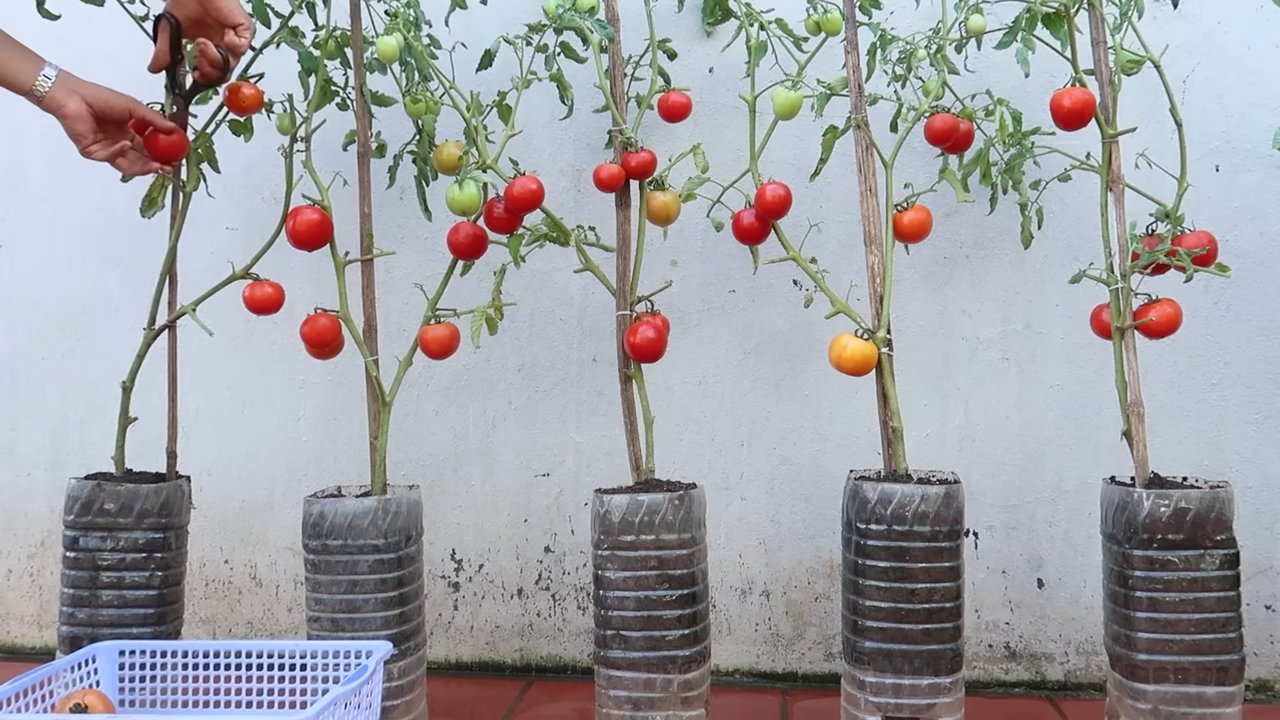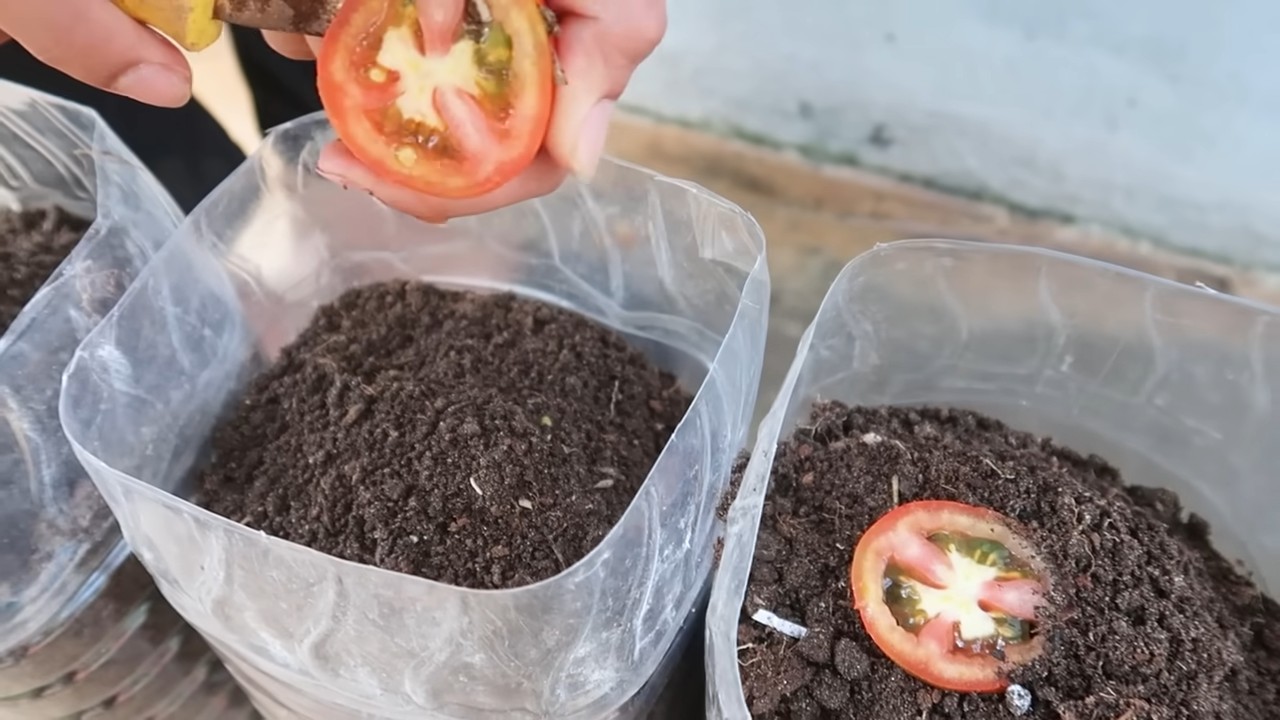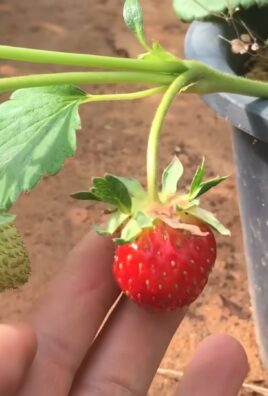Tomato garden for family: Imagine biting into a sun-warmed, juicy tomato, bursting with flavor, knowing you grew it yourself! There’s nothing quite like the taste of homegrown tomatoes, and the satisfaction of nurturing a plant from seed to delicious fruit. For generations, families have cultivated tomato gardens, passing down knowledge and creating lasting memories. From the ancient Aztecs, who first domesticated the wild tomato, to Italian grandmothers perfecting their secret sauce recipes, the tomato has always held a special place in our hearts and on our tables.
But let’s be honest, sometimes getting that perfect tomato harvest can feel like a real challenge! Pests, diseases, and unpredictable weather can all throw a wrench in your gardening plans. That’s where these DIY tricks and hacks come in. I’m going to share some simple, effective, and budget-friendly ways to maximize your yield and minimize the headaches. Whether you’re a seasoned gardener or just starting out, these tips will help you create a thriving tomato garden for family that provides you with an abundance of delicious, healthy tomatoes all season long. So, grab your gardening gloves, and let’s get started!

Your Own Family Tomato Garden: Here’s How!
Hey everyone! I love snacking on fresh tomatoes straight from the garden. And because I know that many of you would also like to grow your own, I’ve put together this ultimate guide for a family tomato garden. Don’t worry, it’s easier than you think! We’ll go through everything step by step, so that even beginners like I was (at the beginning!) can achieve a bountiful harvest.
What you need for your tomato garden:
Before we get started, here is a list of everything you’ll need. Don’t worry, you might already have many of these things at home!
- Tomato seeds or young plants: I recommend starting with young plants, especially if you have little time or experience. Seeds are cheaper, but it takes longer until you can harvest.
- Seed starting mix: For starting from seeds.
- Pots or seed trays: For starting seeds.
- Garden soil: Good, nutrient-rich soil is essential.
- Compost: To enrich the soil.
- Tomato stakes or cages: To support the plants.
- Planters (optional): If you don’t have a garden, you can also grow tomatoes in pots.
- Watering can or garden hose: For watering.
- Pruning shears: For pruning and harvesting.
- Fertilizer: Special tomato fertilizer is ideal.
- Mulch: Straw or wood chips to keep the soil moist and suppress weeds.
- Gloves: To keep your hands clean.
- Shovel or spade: For digging and planting.
- Labels: To identify the different tomato varieties.
Phase 1: Preparation – The Foundation for a Bountiful Harvest
Proper preparation is the key to a successful tomato garden. Here I’ll show you how to give your tomatoes the perfect start.
- Choose the right location: Tomatoes love the sun! Find a spot in your garden that gets at least 6-8 hours of direct sunlight per day. This is super important for a good harvest.
- Prepare the soil: Tomatoes need loose, well-draining soil. If your soil is very clayey, you can improve it with compost and sand. Dig over the soil and remove stones and weeds. I always mix in a generous amount of compost, my tomatoes love it!
- Starting seeds (optional): If you’re starting with seeds, begin about 6-8 weeks before the last frost indoors. Fill seed trays or small pots with seed starting mix, sow the seeds about 1 cm deep, and keep the soil moist. Place the trays in a warm, bright place. Once the seedlings are big enough, you can transplant them into larger pots.
- Prepare planters (optional): If you want to grow tomatoes in pots, choose large pots with a diameter of at least 30 cm (12 inches). Fill the pots with good garden soil and mix in some compost. Make sure the pots have drainage holes so water can run out.
Phase 2: Planting – The Start of a Tomato’s Life
Now let’s get down to it! Here I’ll show you how to plant your tomatoes correctly so they feel comfortable and grow magnificently.
- Choose the right time: Tomatoes are sensitive to frost. Wait until there is no more danger of frost before planting them outdoors. This is usually in mid-May, but check the weather conditions in your region.
- Prepare the plants: Before you plant the tomatoes, water them thoroughly. This helps them cope better with the move.
- Dig planting holes: Dig holes that are slightly larger than the root balls of the tomato plants. The distance between the plants should be about 50-60 cm (20-24 inches).
- Plant the tomatoes: Place the tomato plants in the holes and fill them with soil. Press the soil down lightly. You can plant the tomatoes a little deeper than they were in the pot. This promotes root formation.
- Watering: Water the tomatoes thoroughly after planting.
- Install supports: Place tomato stakes or cages next to the plants. Tomato plants get heavy when they bear fruit and need support. I prefer to use bamboo tomato stakes, they also look nice.
Phase 3: Care – So Your Tomatoes Feel Completely Comfortable
Care is crucial for a bountiful harvest. Here I’ll show you how to water, fertilize, and prune your tomatoes correctly.
- Watering: Tomatoes need regular water, especially during fruit formation. It’s best to water in the morning so the leaves can dry during the day. Avoid watering the leaves, as this can promote fungal diseases. I always water directly at the roots.
- Fertilizing: Tomatoes are heavy feeders and need regular fertilizer. Start fertilizing about 2-3 weeks after planting. Use a special tomato fertilizer and follow the instructions on the package. I fertilize my tomatoes every two weeks.
- Pruning (Removing Suckers): Pruning means removing the side shoots that form in the leaf axils. This promotes the growth of the main stems and ensures better air circulation for the plants. Remove the side shoots regularly with pruning shears or simply break them off. I prefer to do this when the shoots are still small.
- Mulching: Cover the soil around the tomato plants with mulch. This keeps the soil moist, suppresses weeds, and protects the fruit from dirt. I prefer to use straw or wood chips.
- Controlling diseases and pests: Tomatoes can be affected by various diseases and pests. Look for signs like yellow leaves, spots, or holes. If necessary, you can use organic pesticides. I check my tomatoes regularly and remove affected leaves immediately.
Phase 4: The Harvest – The Reward for Your Effort
The time has finally come! Here I’ll show you when and how to harvest your tomatoes so they develop their full flavor.
- Recognizing the right time: Tomatoes are ripe when they have their full color and are easily detached from the stem. Squeeze the tomato lightly; it should give a little.
- Harvesting: Cut the ripe tomatoes with pruning shears. Don’t leave the tomatoes on the plant for too long, as they might split.
- Storage: Store the harvested tomatoes in a cool, dark place. Avoid storing them in the refrigerator, as they will lose their flavor.
- Enjoying: Enjoy your homegrown tomatoes! They taste great plain, in a salad, on bread, or in sauces.
Extra-Tips for an Even Better Harvest:
Crop rotation: Don’t plant tomatoes in the same spot every year. This helps to avoid diseases and pests.
Variety selection: Choose tomato varieties that are suitable for your climate and needs. There are countless varieties, from small cherry tomatoes to large beefsteak tomatoes. I try new varieties every year!

Conclusion
So, there you have it! Transforming your outdoor space into a thriving tomato garden for your family is not only achievable, but incredibly rewarding. We’ve walked through the essential steps, from selecting the perfect tomato varieties to nurturing them with the right care and attention. But why is this DIY project a must-try?
Firstly, the taste. Store-bought tomatoes simply cannot compare to the sun-ripened, bursting-with-flavor goodness of homegrown tomatoes. Imagine biting into a juicy, red tomato, still warm from the sun, knowing that you cultivated it yourself. The difference is truly remarkable.
Secondly, it’s a fantastic family activity. Gardening together teaches children valuable lessons about nature, responsibility, and where their food comes from. It’s a chance to bond, create lasting memories, and instill a love for the outdoors. Plus, involving your family in the process makes everyone more invested in the success of the garden and the enjoyment of the harvest.
Thirdly, it’s a sustainable and healthy choice. By growing your own tomatoes, you’re reducing your reliance on commercially grown produce, which often involves pesticides and long-distance transportation. You have complete control over what goes into your garden, ensuring that your tomatoes are healthy, organic, and free from harmful chemicals.
And finally, it’s incredibly satisfying. There’s a unique sense of accomplishment that comes from nurturing a plant from seed to fruit. Watching your tomato plants grow and thrive is a testament to your hard work and dedication.
Ready to take your tomato garden to the next level? Consider experimenting with different tomato varieties to find your family’s favorites. Try growing heirloom tomatoes for unique flavors and colors, or cherry tomatoes for a sweet and snackable treat. You can also explore companion planting, such as basil or marigolds, to deter pests and improve the health of your tomato plants.
Don’t be afraid to get creative with your garden design. Use raised beds for better drainage and accessibility, or try growing tomatoes in containers if you have limited space. You can even build a simple trellis to support your tomato plants and maximize their yield.
We encourage you to embark on this exciting journey and create your own thriving tomato garden for your family. It’s an investment in your health, your family’s well-being, and the environment.
So, grab your gardening gloves, gather your family, and get ready to experience the joy of growing your own delicious tomatoes. And most importantly, don’t forget to share your experiences with us! We’d love to hear about your successes, challenges, and favorite tomato varieties. Share your photos and stories on social media using #MyFamilyTomatoGarden, and let’s inspire others to join the fun. Happy gardening!
Frequently Asked Questions (FAQ)
What are the best tomato varieties for beginners?
For beginners, determinate tomato varieties like ‘Roma’, ‘Celebrity’, and ‘Early Girl’ are excellent choices. Determinate tomatoes grow to a specific size and produce most of their fruit at once, making them easier to manage. They are also generally more compact, making them suitable for smaller gardens or containers. Indeterminate varieties, such as ‘Beefsteak’ and ‘Cherry’ tomatoes, continue to grow and produce fruit throughout the season, requiring more pruning and support. However, they offer a longer harvest period. Consider your space, climate, and desired harvest time when choosing your tomato varieties.
How much sunlight do tomato plants need?
Tomato plants require at least 6-8 hours of direct sunlight per day to thrive. Insufficient sunlight can lead to leggy growth, reduced fruit production, and increased susceptibility to diseases. Choose a location for your tomato garden that receives ample sunlight throughout the day. If you live in a particularly hot climate, some afternoon shade may be beneficial to prevent sunscald on the fruits. Monitor your plants closely and adjust their location if necessary to ensure they are receiving enough sunlight.
What is the best type of soil for growing tomatoes?
Tomatoes prefer well-draining, fertile soil with a slightly acidic pH (6.0-6.8). Amend your soil with compost or other organic matter to improve its drainage, fertility, and water-holding capacity. Avoid heavy clay soils, which can become waterlogged and suffocate the roots. If you have poor soil, consider growing tomatoes in raised beds or containers filled with a high-quality potting mix. Regularly test your soil pH and adjust it as needed to ensure optimal growing conditions.
How often should I water my tomato plants?
Water your tomato plants deeply and regularly, especially during hot, dry weather. Aim to water at the base of the plant to avoid wetting the foliage, which can increase the risk of fungal diseases. The frequency of watering will depend on the weather, soil type, and size of your plants. As a general rule, water when the top inch of soil feels dry to the touch. Avoid overwatering, which can lead to root rot. Mulching around your tomato plants can help retain moisture and reduce the need for frequent watering.
What are some common tomato pests and diseases, and how can I prevent them?
Common tomato pests include aphids, tomato hornworms, and whiteflies. Diseases include early blight, late blight, and blossom end rot. To prevent pests and diseases, practice good garden hygiene, such as removing weeds and debris, and providing adequate spacing between plants. Use organic pest control methods, such as insecticidal soap or neem oil, to control pests. Choose disease-resistant tomato varieties and water at the base of the plant to avoid wetting the foliage. Blossom end rot is caused by calcium deficiency, so ensure your soil is rich in calcium and water your plants consistently.
How do I prune my tomato plants?
Pruning tomato plants can improve air circulation, reduce the risk of diseases, and encourage fruit production. For determinate tomato varieties, minimal pruning is required. Simply remove any suckers (small shoots that grow between the main stem and branches) below the first flower cluster. For indeterminate varieties, prune regularly to remove suckers and maintain a single or double main stem. This will allow the plant to focus its energy on producing fruit. Use clean, sharp pruning shears to avoid spreading diseases.
When is the best time to harvest tomatoes?
Tomatoes are ready to harvest when they are fully colored, slightly soft to the touch, and easily detach from the vine. The exact color will depend on the variety. Gently twist or cut the tomato from the vine, leaving a small piece of stem attached. Avoid squeezing the tomato, as this can bruise the fruit. Store ripe tomatoes at room temperature for the best flavor.
Can I grow tomatoes in containers?
Yes, tomatoes can be successfully grown in containers. Choose a large container (at least 15-20 gallons) with drainage holes. Use a high-quality potting mix and provide adequate support for the plants, such as a stake or cage. Water and fertilize regularly, as container-grown tomatoes tend to dry out and deplete nutrients more quickly than those grown in the ground. Choose compact or dwarf tomato varieties for smaller containers.
How do I fertilize my tomato plants?
Fertilize your tomato plants regularly with a balanced fertilizer (e.g., 10-10-10) or a fertilizer specifically formulated for tomatoes. Follow the instructions on the fertilizer package for application rates. Fertilize at planting time and then every 4-6 weeks throughout the growing season. Avoid over-fertilizing, which can lead to excessive foliage growth and reduced fruit production. You can also amend your soil with compost or other organic matter to provide a slow-release source of nutrients.
What can I do with excess tomatoes?
If you have a bumper crop of tomatoes, there are many ways to preserve them. You can can them, freeze them, dry them, or make tomato sauce, salsa, or chutney. Excess tomatoes can also be shared with friends, family, or neighbors. Don’t let your hard work go to waste!





Leave a Comment